I love a good road trip. If you’ve followed my blogs for awhile you know I enjoy muddin’ in Louisiana bayous, road tripping through New Mexico and off-roading around Arizona backwoods. So when my new friend Mohammad Qamhiya suggested that we take the Namaleh Road – or King’s Highway – on a sort of pilgrimage to Petra in Jordan, I said, “Heck, yeah!”
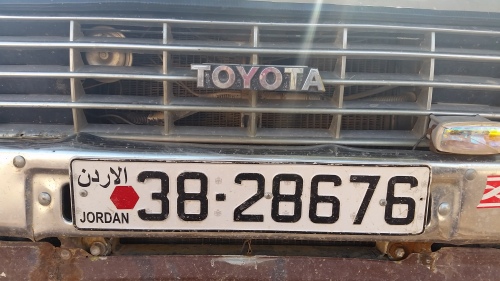
“We just called in and learned that the backroad to Petra is open today,” announced Mohammed. “It is our good fortune as the mountain pass is not always accessible.” Who knows who he called to get that information? I was surprised to learn that there was cell service out here in the back of beyond. We’d just spent a candlelit night at off-the-grid Feynan Ecolodge in the Dana Biosphere Reserve, Jordan’s largest nature reserve. True Bedouin country with camels, goat herds and sunbaked rock sans electricity except what little was produced by the lodge’s solar panels. The compound was designed around internal courtyards reminiscent of the ancient caravanseri or inns on the silk routes through the desert. Adventurers from around the world come to the inn to spend a day with a goat herder, hike the slot canyons and ancient ruins or learn traditional Bedouin coffee rituals from a shaykh (tribal leader). Explorers like us are willing to give up the luxuries of a five-star hotel for a star-lit experience.
The previous evening, we lay on mats on the lodge’s panoramic rooftop terrace looking up at a field of stars. Suleiman “Starman” Al-Hasaseen guided us through the heavens pointing out stars that could be seen with the human eye which were used by Bedouins to navigate passage in the desert. Then he got out a high-powered telescope, and we stood to peer into the state-of-the-art astronomic device to view Jupiter’s moons. I was tickled by the anachronism: traditional Bedouin starwatching versus modern high tech astronomy.

“Seriously, are you up for taking Namaleh Road? We’ll ride in Bedouin Jeeps on a rough, dusty, primitive four-wheel-drive road,” Mohammed warned with a frown. Mohammed seldom frowned. The King’s Highway, so named because it was a trade route of frankincense and spices from the southern Arabian Peninsula through Petra towards consumers in Egypt, Rome and Greece. Huge camel caravans made their way through mountains and deserts on this track.
He must have predicted our answer because when we walked out of the desert compound, four local men each with a well-used vehicle waited to take us over the desolate mountain pass to Petra. I didn’t see a Jeep among the fleet, but rather 1980s-vintage Toyotas, Nissans and Mitsubishis. I snagged the front seat with Abdullah in an extended cab Mitsubishi pick-up – old but meticulously wiped clean. He drove us over rutted, bumpy roads from the ecolodge to the nearest village. He pulled up into the on-coming lane of the dusty two-lane road next to another Bedouin Jeep, waving at the driver and shouted across open windows something in Arabic before swinging into a roadside vegetable stand. More Arabic or maybe it was the local Bedouin language as he jumped out of our truck, and from behind the tomatoes appeared a green five-gallon plastic can. “Oh, this is the gas station,” I said to my two travel writing companions in the backseat. The shopkeeper hoisted the heavy can and started pouring gasoline into our 4×4.

“Why is it I always get the driver that needs to put gas in his Jeep after he picks us up?” I said remembering my white-knuckled off-road trip to tea plantations in Kerala, India, with the gas needle pegged to empty. But here in the remote reaches of Jordan, our gas gauge read ‘full’ as we turned towards Petra on the asphalt highway.

Oncoming traffic included a robed Bedouin on his camel, a horse decked out in Arabian regalia and, of course, the occasional passing car bearing head-on into our lane. No matter that my seat belt wasn’t functional – I simply prayed. Fields of tomatoes and squash were just a blur as we sped up and over what us off-roaders call “whoops.”
“Oh, my God,” I laughed as my head almost hit the ceiling.
“Don’t laugh – you’re just encouraging him,” said Annette from the back gripping the “Oh Shit” handle above her half-opened window, which wouldn’t go up or down, BTW. Abdullah turned to me grinning and motioned to the road ahead. Somehow in a split second he communicated, “Hey if you liked that, this next one is even better.” I glanced at the speedometer as we hit the second asphalt rollercoaster: 80 kilometers per hour and I tried to do the math – how many miles per hour? It seemed like a million, and I thought for sure we were going to take air. I’m sure all three travel writers’ stomachs were in our throats as we came down.
“I think he thinks we like it,” Brigit hooted above the wind noise in the backseat – as if she liked it. Soon we were on gravel road and weaving around a construction barricade in the middle of our lane. This evidently was the part of the road that was typically closed, but we passed the sign too fast to see if it actually said, “Road Closed.”
“Yallah, yallah,” laughed Brigid, “That mean’s let’s go! Let’s go!”
Annette remained solemn.
We drove right by the UNHRC work crews and onto the dirt road that switched backed and forth ahead of us like the ominous Going to the Sun Road at Glacier National Park. Were those United Nations Human Rights Council workers that we just dusted? Before grabbing my own “Oh Shit” handle, I noticed that its vinyl covering was pretty much worn off. I tugged one last time at the flaccid seatbelt – no, it still didn’t work.
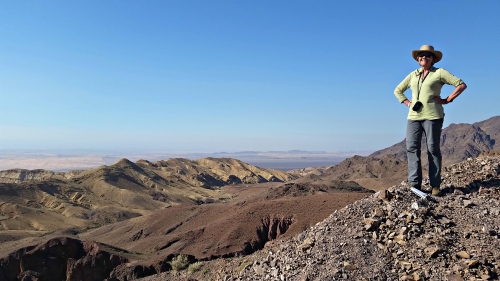 Up and up we drove on the mountainous, squiggly two-lane dirt track. Earthmoving equipment was parked catawampus of the side of sharp-angled ditches. They seemed to be laid aside for the preferred method of road building as groups of three or four workers with shovels bent backs in front of the motionless behemoths. We hit the first mountain pass and started down the other side, seeing more mountains rising before us. “This could be like how Berthoud or Loveland Passes looked before they were paved,” I contemplated as I viewed the harsh angle of downward gradient before us. Abdullah started pumping the brakes to slow our descent. The brakes didn’t really seem to be working too well, but he continued to pump.
Up and up we drove on the mountainous, squiggly two-lane dirt track. Earthmoving equipment was parked catawampus of the side of sharp-angled ditches. They seemed to be laid aside for the preferred method of road building as groups of three or four workers with shovels bent backs in front of the motionless behemoths. We hit the first mountain pass and started down the other side, seeing more mountains rising before us. “This could be like how Berthoud or Loveland Passes looked before they were paved,” I contemplated as I viewed the harsh angle of downward gradient before us. Abdullah started pumping the brakes to slow our descent. The brakes didn’t really seem to be working too well, but he continued to pump.
“Great! This is payback time for the prank I pulled on my flat-lander Father back in Durango years ago,” I realized to my horror. Dad was visiting me after I first moved out West and was working for the phone company in small mountain towns. I had finally gotten used to driving on steep mountain roads without guardrails and wanted to show off my expertise in my sassy sports car. As we whizzed down One-Million-Dollar-Highway with drop-offs on the outside turns, I pumped the clutch, pretending it was the brakes. “Oh no, the brakes are out,” I taunted my Dad. Did I mention he was afraid of heights? Yes, I still feel totally guilt-ridden about that one.
So back to Abdullah. He seemed to be well-practiced at the brake-pumping thing, so I realized that “this is how they do it here.” No need to worry. As we began to climb again, I watched the mountains outside my open window change from grey to red. We stopped at the summit to stretch our legs and make use of the phenomenal photos ops high above the Jordanian desert below at sea level. We climbed to the top of a rise where we could look down on our Bedouin jeeps.

“Oh, no what are we going to do?” wailed a travel writer from another truck. “Looks like your truck is broken down. He has the hood up.” I could see Abdullah pouring water from what looked like an skin animal bag onto the radiator.
“No, it’s OK. He knows what he is doing,” I said. I, too have a truck of the same vintage that I must baby like Abdullah was doing with his brakes and radiator. My ‘87 Toyota Four-Runner with windows that fail to rise and an engine too small for the load is like my baby, and Abdullah’s vehicle seemed to be its twin separated at birth. I walked down to where Abdullah stood proudly over the engine compartment nursing his ‘baby.’ I caught his eyes and then patted the fat fender of his truck. When he smiled back, I knew we had a special connection: crazy drivers and their well-worn vehicles.
Enjoy this article? Then go to http://amzn.to/2412teu and read more. #MyJordanJourney #LearnJordan Disclaimer: Jordan Tourism hosted author Stacey Wittig on this trip. All her opinions are her own.
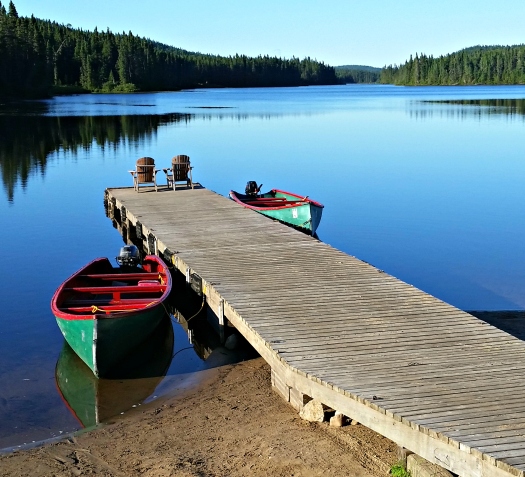 That morning as I walked to the historic fishing lodge for my last breakfast, I was mesmerized by the stillness of the lake. The winds from the evening before had calmed and I was overcome with regret that I had not gotten up an hour earlier to take out the kayak on the beautiful waters.
That morning as I walked to the historic fishing lodge for my last breakfast, I was mesmerized by the stillness of the lake. The winds from the evening before had calmed and I was overcome with regret that I had not gotten up an hour earlier to take out the kayak on the beautiful waters.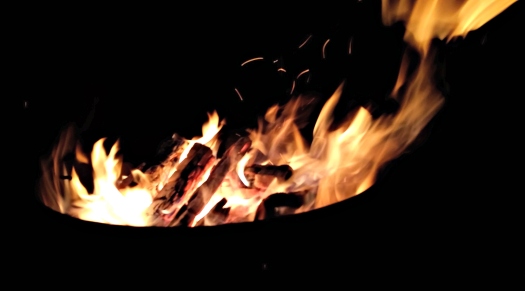 The night before we had stayed up late around the campfire roasting marshmallows and telling stories, and so I had set my alarm a little later than usual this morning. Alas, I missed my last paddle on that velvety mirror.
The night before we had stayed up late around the campfire roasting marshmallows and telling stories, and so I had set my alarm a little later than usual this morning. Alas, I missed my last paddle on that velvety mirror.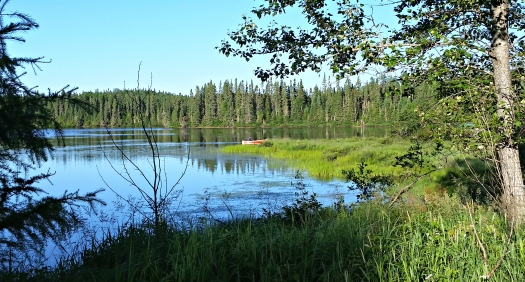

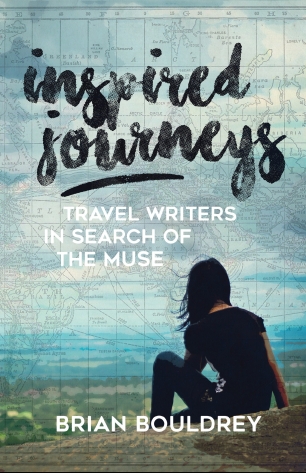 Inspired Journeys: Travel Writers in Search of the Muse
Inspired Journeys: Travel Writers in Search of the Muse



 Up and up we drove on the mountainous, squiggly two-lane dirt track. Earthmoving equipment was parked catawampus of the side of sharp-angled ditches. They seemed to be laid aside for the preferred method of road building as groups of three or four workers with shovels bent backs in front of the motionless behemoths. We hit the first mountain pass and started down the other side, seeing more mountains rising before us. “This could be like how Berthoud or Loveland Passes looked before they were paved,” I contemplated as I viewed the harsh angle of downward gradient before us. Abdullah started pumping the brakes to slow our descent. The brakes didn’t really seem to be working too well, but he continued to pump.
Up and up we drove on the mountainous, squiggly two-lane dirt track. Earthmoving equipment was parked catawampus of the side of sharp-angled ditches. They seemed to be laid aside for the preferred method of road building as groups of three or four workers with shovels bent backs in front of the motionless behemoths. We hit the first mountain pass and started down the other side, seeing more mountains rising before us. “This could be like how Berthoud or Loveland Passes looked before they were paved,” I contemplated as I viewed the harsh angle of downward gradient before us. Abdullah started pumping the brakes to slow our descent. The brakes didn’t really seem to be working too well, but he continued to pump.